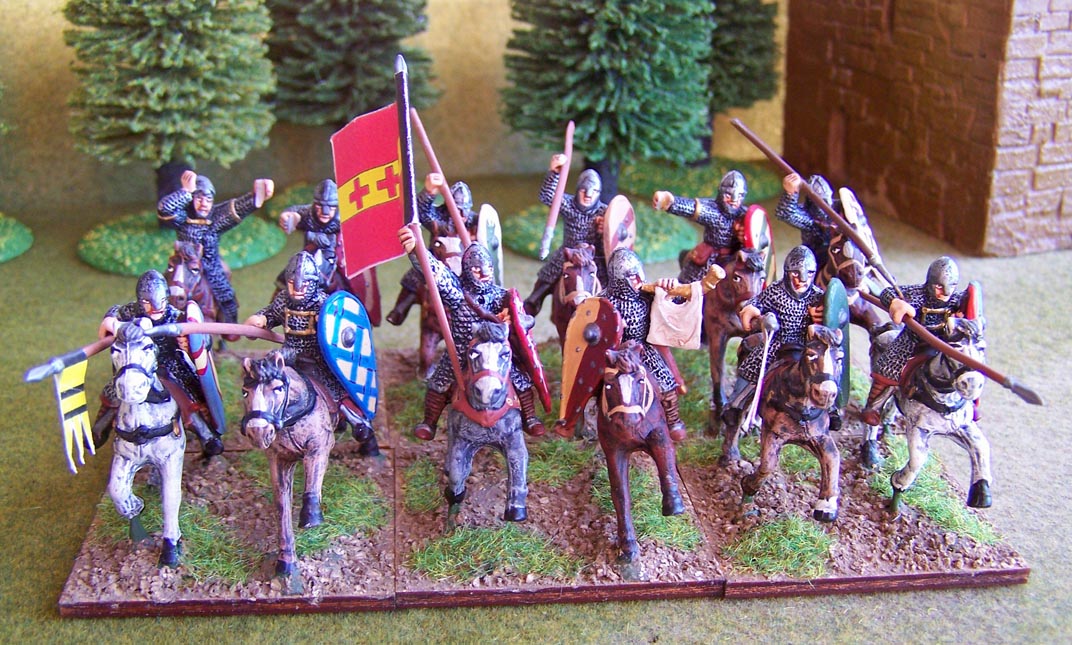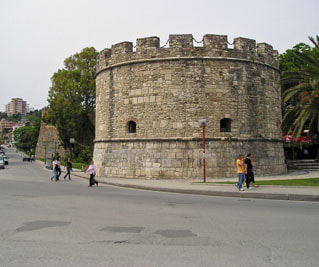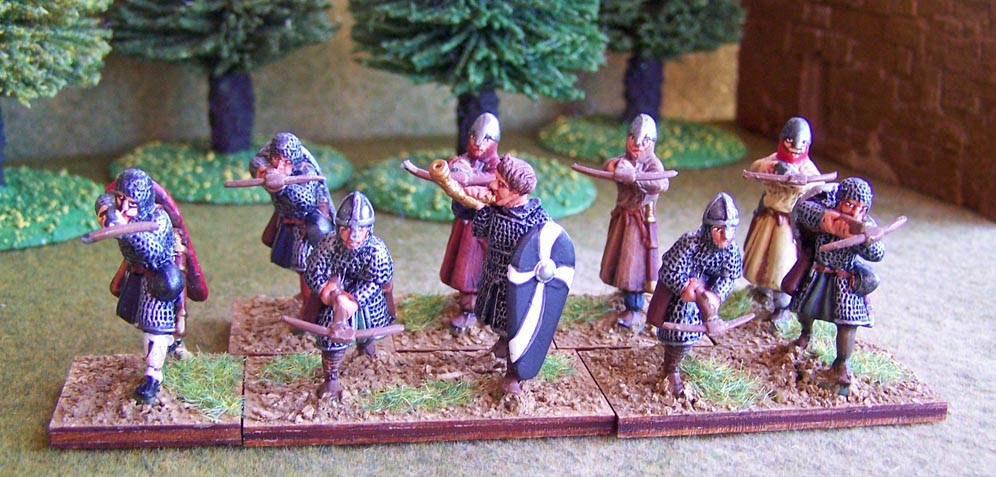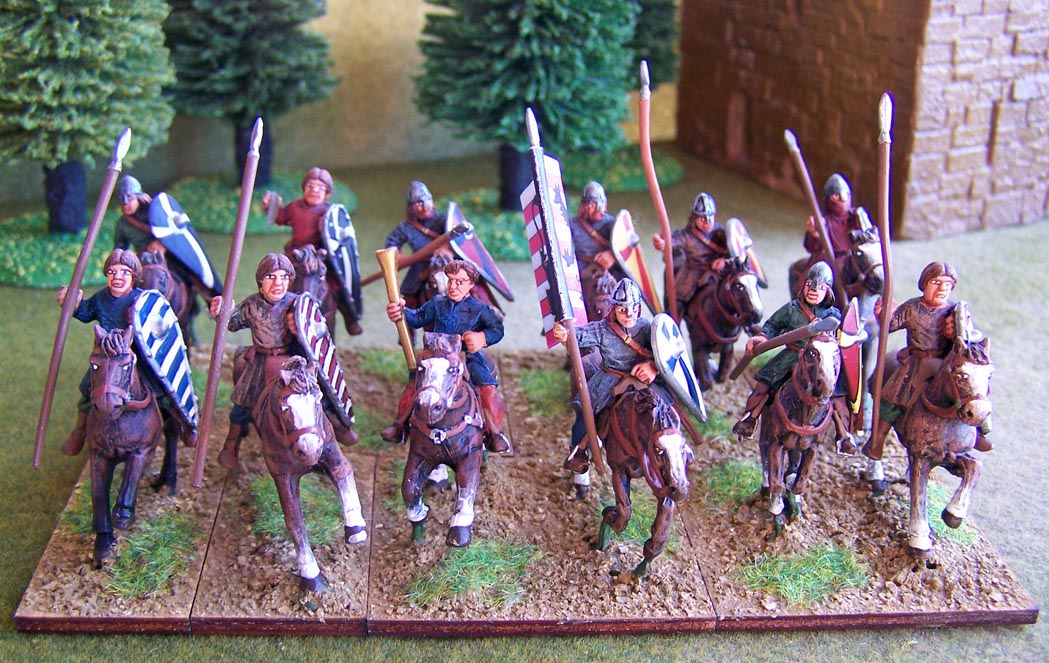- Home
- About
-
Travel
-
Features
- Dyrrachion1081
- Normans in the Balkans
- Manolada 1316
- Kosovo 1389
- Castles on the Danube
- Late Medieval Bosnian Army
- Doboj 1415
- Wallachian and Moldovan troops of the Napoleonic wars
- Anchialos 917
- Slovenian Borderlands
- The Zadruga and the Military Border
- Cretan War in the Adriatic
- Salonika 1916
- Uskoks of Senj
- Siege of Klis 1537
- Eugene in the Balkans
- Moldavian Surprise 1711
- Austro-Turkish War 1737-9
- Militargrenze
- Invading Ottoman Turkey
- Siege of Ragusa 1814
- Russo-Turkish War 1806-12
- Serbian Uprising 1815
- Ali Pasha
- Ottoman Army 1826
- Aleksinac 1876
- Shipka Pass
- Slivnitsa 1885
- Romanian Army 1878
- Austrian forts 19thC
- Kumanovo 1912
- Catalca Lines
- Adrianople 1912-13
- Kajmakcalan 1916
- The other 1918 campaign
- Macedonia air war WW1
- War of the Stray Dog
- Royal Yugoslavian armed forces
- Blunder in the Mountains
- Romanian SS
- Gebirgsjager in the Balkans
- Knights Move 1944
- Vis during WW2
- HLI in the Adriatic
- Adriatic Cruel Seas
- Dalmatian Bridgehead
- Cyprus 1974
- Transnistrian War
- Ottoman Navy Napoleonic wars
- Medieval Balkans
- Balkan lockdown quiz >
- Reviews
-
Armies
- Ancient Greeks
- Pyrrhic army of Epirus
- Dacian wars
- Goths
- Late Roman
- Comnenan Byzantine Army
- Normans
- Serbian medieval
- Albanian medieval
- Wallachian medieval
- Bosnian Medieval
- Catalan Company
- Polish 17C
- Austrian Imperialist
- Ottoman
- Austrian 18thC
- Russian Early 18thC
- Ottoman Napoleonic
- Greek Revolution
- 1848 Hungarian Revolution
- Russian Crimean war
- Romanian Army of 1877
- Ottoman 1877
- Russian 1877
- Balkan Wars 1912-13
- Macedonia WW1
- Greece WW2
- Italian Army WW2
- Gebirgsjager WW2
- Hungary WW2
- Turkey WW2
- Soviet Union WW2
- Bulgaria WW2
- Turkish Korean War Brigade
- Balkan Wars 1990s
- Links
- Books
Normans in the Balkans
Introduction
In the UK at least, any mention of the Normans immediately conjures up images of 1066 and the Norman Conquest. However, there is much more to the story of the Normans than that. In a period of some 50 years, men from a modest French region also conquered most of southern Italy and Sicily. They had interests in Spain, invaded the Byzantine Empire and played a key role in the First Crusade, establishing the Norman principality of Antioch.
My own introduction to the Normans outside Britain came with John Julius Norwich’s beautiful book, ‘The Normans in the South’. His flowing narrative reads more like a Bernard Cornwell novel and the story is in many ways more remarkable than a work of historical fiction.
He followed that up with a volume on the Normans in Sicily and for many years I successfully fielded a Sicilian Norman WAB army on the tabletop. The balance of firepower, a solid infantry base, skirmishing cavalry and then the crushing charge of Norman knights, was a winning combination.
In the UK at least, any mention of the Normans immediately conjures up images of 1066 and the Norman Conquest. However, there is much more to the story of the Normans than that. In a period of some 50 years, men from a modest French region also conquered most of southern Italy and Sicily. They had interests in Spain, invaded the Byzantine Empire and played a key role in the First Crusade, establishing the Norman principality of Antioch.
My own introduction to the Normans outside Britain came with John Julius Norwich’s beautiful book, ‘The Normans in the South’. His flowing narrative reads more like a Bernard Cornwell novel and the story is in many ways more remarkable than a work of historical fiction.
He followed that up with a volume on the Normans in Sicily and for many years I successfully fielded a Sicilian Norman WAB army on the tabletop. The balance of firepower, a solid infantry base, skirmishing cavalry and then the crushing charge of Norman knights, was a winning combination.
|
Normans in the South
The Normans in the south were not part of a typical medieval invasion, led by their king. In the main, they were the sons of minor nobility who filtered into southern Italy as mercenaries before establishing themselves as rulers. No less than ten sons of a minor Norman landowner, Tancred of Hauteville-le-Guichard came to Italy. The most famous was Robert Guiscard and his son Bohemund. My personal favourite was his younger brother Roger, who became King of Sicily, but that’s another story. Starting from a small settlement in Aversa, they defeated the Pope at the Battle of Civitate in 1053 and then became his most important ally, before taking southern Italy from the Lombards and Byzantines. It was then that Robert looked towards the Balkans. In 1074 he sent his daughter Helena to be married to the son of the Byzantine Emperor Michael VII. However, Michael was deposed in 1078 and the marriage contract repudiated. So Robert found a Greek imposter for the deposed Michael and started his invasion in May 1081, with Papal blessing. They seized Corfu and then moved to the mainland to attack Dyrrhachium (Durazzo, modern Durres in Albania). The Normans had another enemy in the Adriatic, the Venetians. In 1074, the Normans had briefly seized the major costal towns of northern Dalmatia, before being ejected by Venice. Again, it was a Venetian fleet that dispersed the Norman ships at Dyrrhachium, enabling the Byzantine governor to repel the siege. |
Battle of Dyrrhachium
The recently enthroned Byzantine Emperor Alexios had marched west to relieve the city. As the garrison was under no immediate pressure many advised him to wait arguing that, with the Normans blockaded by land and sea, time was on the Emperor’s side. Alexios favoured an attack and planned a flanking move by light forces through the marshes whilst his main army fell on the Norman camp. However, Guiscard’s scouts spotted the move and he advanced out of his camp to face the Byzantine army.
As with most medieval battles, the size and composition of the two armies is difficult to assess. Our main source being the somewhat less than objective Emperor’s daughter, Anna Comnena (Alexiad). Her figure of 30,000 Normans is probably excessive, but it included some 1300 heavily armoured Norman cavalry supported by light cavalry and foot with spear, bow and crossbow. One source even mentions Saracen archers from Sicily.
The Byzantine army, after the disastrous defeat by the Turks at Manzikert 1071, still retained some tagmatic cavalry units from Macedonia, Thrace and Thessaly (5000) and two guard units, the Exkoubita and Vestiaritai (2000). The infantry core was the Varangian Guard, around 1400 strong, ironically consisting mostly of Anglo-Saxons who left England after the Norman invasion. The bulk of the army were mercenaries, including 2000 Turkish horse archers and 4000 Armenian foot together with levy foot spearmen, archers and slingers. The total size of the Byzantine army probably did not exceed 22,000.
When Alexios saw the Norman army he reorganised his force into three divisions. He commanded the largely infantry centre with his stronger left flank commanded by Gregory Pakourianos and the right by Nikephorus Melissenous. The Varangian Guard was in front of the centre supported by infantry archers. Guiscard commanded the Norman centre, with Bohemund on his left and Count Ami Giovinazzo on the right.
The battle began with the Varangians advancing towards the Norman line, while attacks from the Norman centre were driven off by archers. The Norman right now charged the Varangian left flank, but while they stood firm the Byzantine left counterattacked driving Count Ami’s forces towards the shore in panic. Guiscard’s wife Sichelgaita, in full armour, rallied them later.
Having learned little from Hastings, the Varangians also pursued the beaten Normans leaving themselves exposed to an attack on their right by Norman spearmen supported by crossbows. This left the weaker Byzantine centre and right exposed to the full force of the Norman heavy cavalry. They soon disintegrated with the exception of the guard units who resisted long enough for the Emperor to flee. Even a belated sortie from the city failed to turn the tide.
The recently enthroned Byzantine Emperor Alexios had marched west to relieve the city. As the garrison was under no immediate pressure many advised him to wait arguing that, with the Normans blockaded by land and sea, time was on the Emperor’s side. Alexios favoured an attack and planned a flanking move by light forces through the marshes whilst his main army fell on the Norman camp. However, Guiscard’s scouts spotted the move and he advanced out of his camp to face the Byzantine army.
As with most medieval battles, the size and composition of the two armies is difficult to assess. Our main source being the somewhat less than objective Emperor’s daughter, Anna Comnena (Alexiad). Her figure of 30,000 Normans is probably excessive, but it included some 1300 heavily armoured Norman cavalry supported by light cavalry and foot with spear, bow and crossbow. One source even mentions Saracen archers from Sicily.
The Byzantine army, after the disastrous defeat by the Turks at Manzikert 1071, still retained some tagmatic cavalry units from Macedonia, Thrace and Thessaly (5000) and two guard units, the Exkoubita and Vestiaritai (2000). The infantry core was the Varangian Guard, around 1400 strong, ironically consisting mostly of Anglo-Saxons who left England after the Norman invasion. The bulk of the army were mercenaries, including 2000 Turkish horse archers and 4000 Armenian foot together with levy foot spearmen, archers and slingers. The total size of the Byzantine army probably did not exceed 22,000.
When Alexios saw the Norman army he reorganised his force into three divisions. He commanded the largely infantry centre with his stronger left flank commanded by Gregory Pakourianos and the right by Nikephorus Melissenous. The Varangian Guard was in front of the centre supported by infantry archers. Guiscard commanded the Norman centre, with Bohemund on his left and Count Ami Giovinazzo on the right.
The battle began with the Varangians advancing towards the Norman line, while attacks from the Norman centre were driven off by archers. The Norman right now charged the Varangian left flank, but while they stood firm the Byzantine left counterattacked driving Count Ami’s forces towards the shore in panic. Guiscard’s wife Sichelgaita, in full armour, rallied them later.
Having learned little from Hastings, the Varangians also pursued the beaten Normans leaving themselves exposed to an attack on their right by Norman spearmen supported by crossbows. This left the weaker Byzantine centre and right exposed to the full force of the Norman heavy cavalry. They soon disintegrated with the exception of the guard units who resisted long enough for the Emperor to flee. Even a belated sortie from the city failed to turn the tide.
|
Into the Balkans
Dyrrhachium held out for a further four months, before being captured by treachery. The Normans captured most of Illyria, northern Greece and parts Thessaly with little resistance. There is only limited evidence, but Georgios Theotokis (Norman Campaigns in the Balkans) argues that the nomadic Vlachs may have formed an alliance with the Normans. However, the Byzantine cause was not lost. Alexios’s agents had been busy raising a revolt in Italy and the Pope required Robert’s army in Rome where he was besieged. Bohemund remained in the Balkan’s, but Robert returned to Italy. Alexios raised a new army, but was defeated by Bohemund in battles at Arta and Ioannina in Epirus. The Byzantines tried a number of different tactics to negate the Norman heavy cavalry, including (according to Theotokis), ‘a number of small and light chariots, with spears fixed on top of them’ – not a unit I have seen suggested before. At Arta the Byzantine’s used caltrops, a more conventional tactic to guard camps against cavalry attacks. However, on both occasions Bohemund discovered the ruse and attacked on both flanks. Bohemund then captured a number of towns on the route towards Salonika, before wintering in Thessaly. This included the siege of Larissa, probably in November 1082. Alexios recrutied yet another army and advanced to relieve the city in the spring or early summer of 1083. This time Alexios tried feigned retreats to weaken the Norman cavalry with some success. Horse archers shot at the Norman horses, forcing them to dismount on the second day of the battle. The demoralised Normans withdrew to Trikala. Dissension in the Norman ranks and no money to pay his troops, forced Bohemund to withdraw back to the coast, leaving an isolated garrison at Kastoria on the strategically important Via Egnatia. This fortress was captured and the Byzantines reoccupied all of Greece and Illyria. The Venetians recaptured Dyrrhachium in the summer of 1083. In short, the Normans had bitten off more than they could chew. Problems of disease and climate challenged the relatively small Norman army left in Greece, which would have been depleted by garrisons to secure extended supply lines. |
Second Balkan expedition
Robert had quickly relieved the siege of Rome and was ready to return to the Balkans in 1084. We know very little about the size of his army, but it was probably smaller than the 1081 campaign. Again, the Venetians intervened, but this time were defeated by the Norman fleet.
Robert’s plan was to target the financial centres of Athens, Corinth and Thebes, rather than Salonika. Having control of the seas, he relieved the siege of Corfu and then established a camp at Vonitsa.
Robert’s army was weakened further by disease, probably Malaria, as he advanced his fleet down the coast. He contracted the illness and died on 17 July 1085. Unsurprisingly, Robert’s death ended the campaign. His son Roger Borsa sought the fealty of the magnates at Vonitsa and then sailed back to Italy. Dyrrhachium was recovered by the Byzantines in the autumn of 1085.
Conclusion
While the Normans hadn’t the resources to destroy the Byzantine Empire, this wasn’t the end of the Normans in the Balkans. Bohemund entered Constantinople in April 1097 as part of the First Crusade and went on to become Prince of Antioch.
Further Reading
John Julius Norwich’s ‘Normans in the South’is a must read, although it’s light on the Balkan campaigns. The only real primary source is ‘The Alexiad of Anna Comnena’, translated in the Penguin Classics series. The best modern work is ‘The Norman Campaigns in the Balkans 1081-1108’ by Georgios Theotokis. John Haldon ‘The Byzantine Wars’has the best description of the Battle of Dyrrhachium. For a broader understanding of the Balkans during this period the excellent standard text is John Fine’s ‘The Early Medieval Balkans’. For the Normans more generally there is Paul Hill's 'The Norman Commanders'.
I would also recommend Finch Allibone’s travelogue ‘In Pursuit of the Robber Baron’. He followed the route of Robert Guiscard from France to Macedonia in 1986.
Robert had quickly relieved the siege of Rome and was ready to return to the Balkans in 1084. We know very little about the size of his army, but it was probably smaller than the 1081 campaign. Again, the Venetians intervened, but this time were defeated by the Norman fleet.
Robert’s plan was to target the financial centres of Athens, Corinth and Thebes, rather than Salonika. Having control of the seas, he relieved the siege of Corfu and then established a camp at Vonitsa.
Robert’s army was weakened further by disease, probably Malaria, as he advanced his fleet down the coast. He contracted the illness and died on 17 July 1085. Unsurprisingly, Robert’s death ended the campaign. His son Roger Borsa sought the fealty of the magnates at Vonitsa and then sailed back to Italy. Dyrrhachium was recovered by the Byzantines in the autumn of 1085.
Conclusion
While the Normans hadn’t the resources to destroy the Byzantine Empire, this wasn’t the end of the Normans in the Balkans. Bohemund entered Constantinople in April 1097 as part of the First Crusade and went on to become Prince of Antioch.
Further Reading
John Julius Norwich’s ‘Normans in the South’is a must read, although it’s light on the Balkan campaigns. The only real primary source is ‘The Alexiad of Anna Comnena’, translated in the Penguin Classics series. The best modern work is ‘The Norman Campaigns in the Balkans 1081-1108’ by Georgios Theotokis. John Haldon ‘The Byzantine Wars’has the best description of the Battle of Dyrrhachium. For a broader understanding of the Balkans during this period the excellent standard text is John Fine’s ‘The Early Medieval Balkans’. For the Normans more generally there is Paul Hill's 'The Norman Commanders'.
I would also recommend Finch Allibone’s travelogue ‘In Pursuit of the Robber Baron’. He followed the route of Robert Guiscard from France to Macedonia in 1986.





